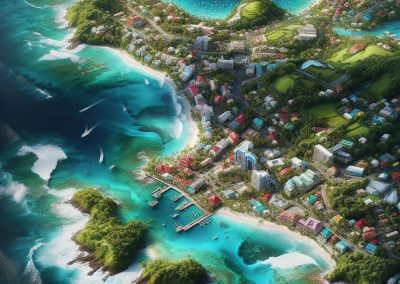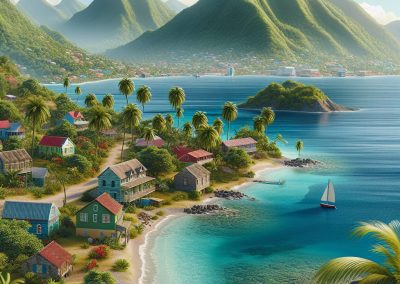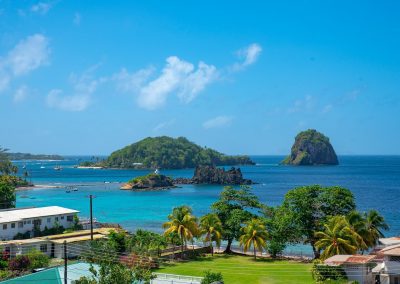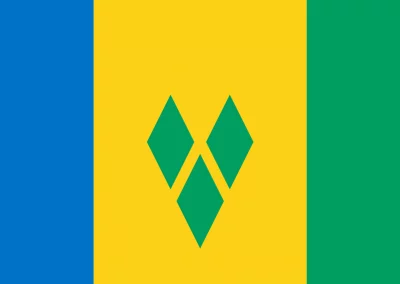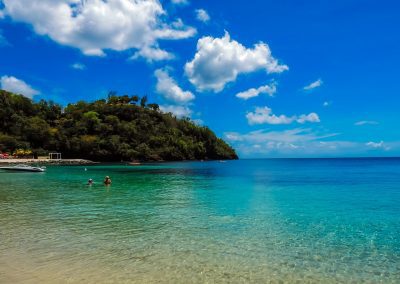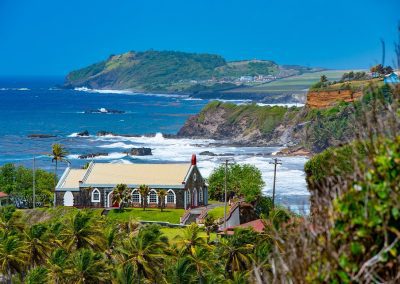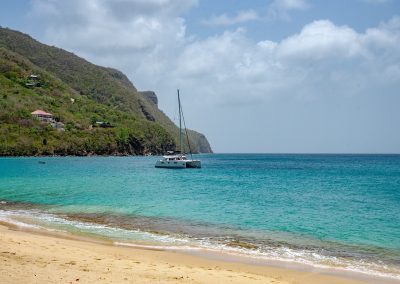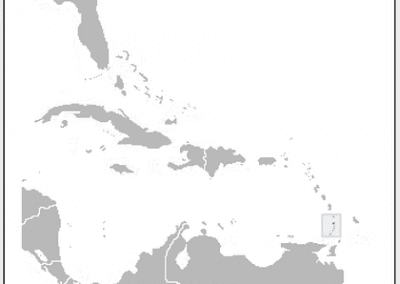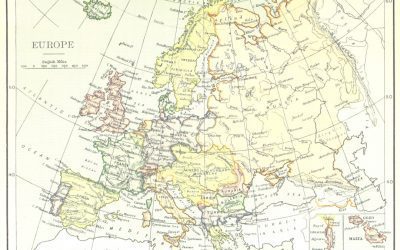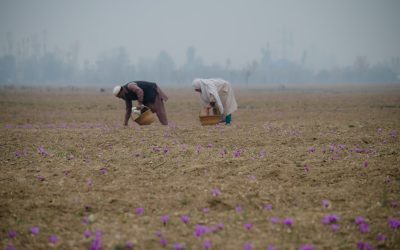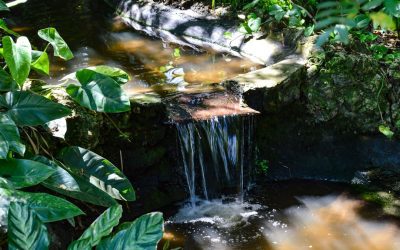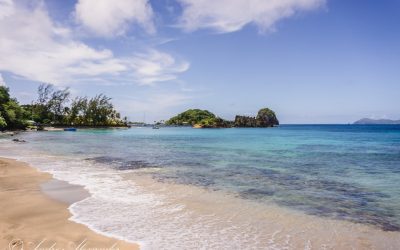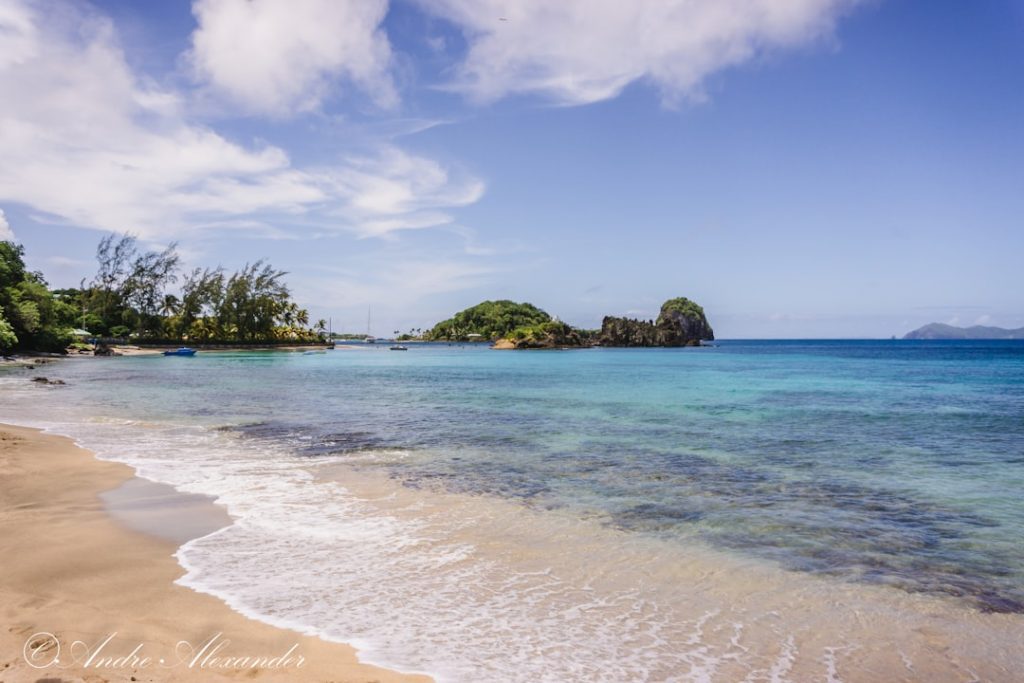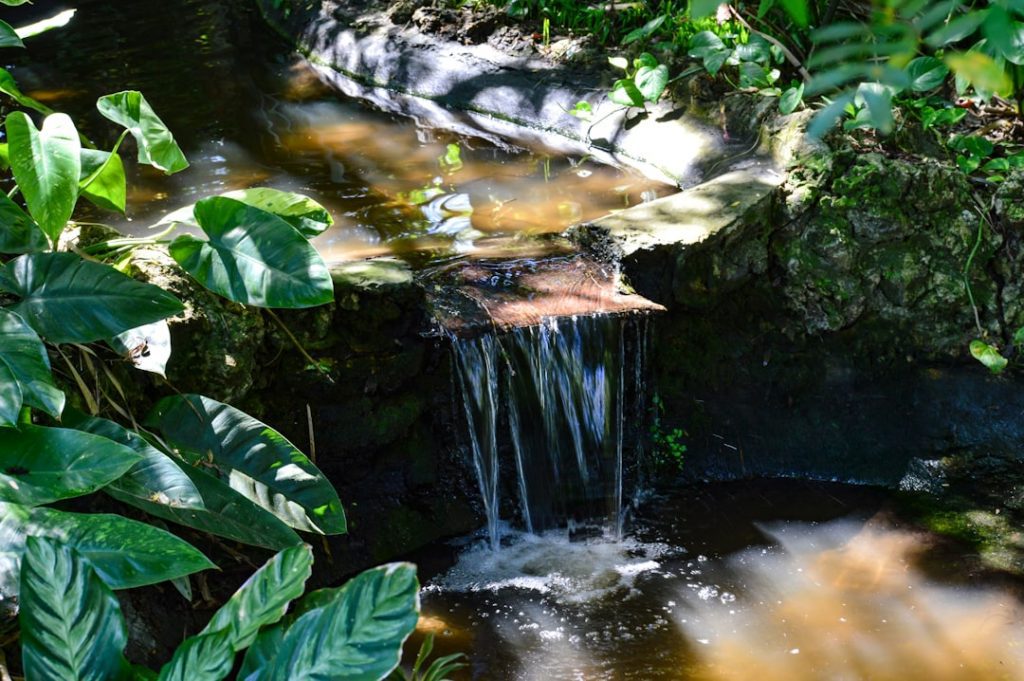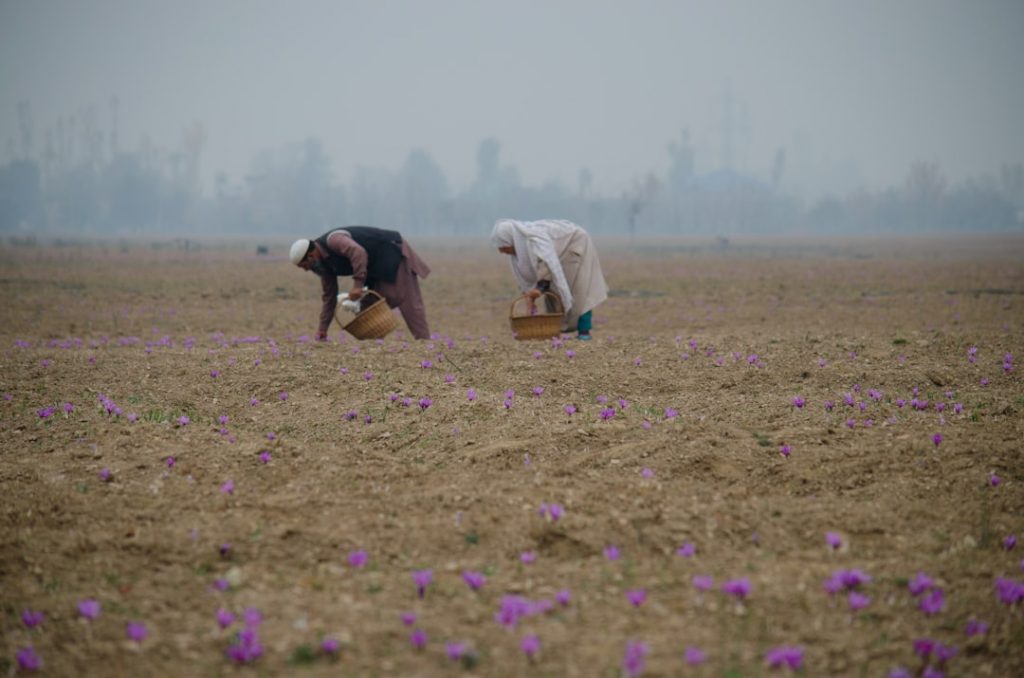Saint Vincent and the Grenadines






Capital: Kingstown
Population (Estimated July 2012): 103,537
Area: 389.3 km2 or 150.3 mi2
Currency: Eastern Caribbean dollar (EC$)
Official Language: English
Political Information: Constitutional Monarchy with a Parliamentary Democracy
Official Religion: No Official Religion
(approximately 75% of the population are Protestant, 13% are Roman Catholic, and 12% have other religious beliefs )
Highest Mountain: La Soufriere at 1,234m or 4,049ft
GDP Official Exchange Rate (OER is more precise at gauging a country’s economic power)
(Estimated 2011): $700 million (US$) or (GBP)
GDP (OER) Per Capita (per member of the population estimated 2011): (US$) or (GBP)
GDP Purchasing Power Parity (PPP is good for gauging living conditions and the use of resources but is not as accurate as OER. This data has been calculated based on the sum value of all goods and services produced in the country valued at prices prevailing in the United States)
(Estimated 2011): $1.224 billion (US$) or (GBP)
GDP (PPP) Per Capita (per member of the population estimated 2011): $11,700 (US$) or (GBP)
Time Zone (GMT/UTC): -4:00
Wildlife:
Counties/Provinces/States: 6 parishes; Charlotte, Grenadines, Saint Andrew, Saint David, Saint George, Saint Patrick
Leaders: H.M. Queen Elizabeth II, represented by Governor-General Sir Frederick Ballantyne with Prime Minister: Ralph Gonsalves
Additional: Gained independence from the U.K. on the 27th of October 1979.
Sources: CIA World Fact Book, Encyclopaedia Britannica.
Saint Vincent and the Grenadines
Saint Vincent and the Grenadines, an enchanting archipelago located in the Caribbean Sea, is a nation that boasts a rich tapestry of culture, history, and natural beauty. Comprising the main island of Saint Vincent and a chain of smaller islands known as the Grenadines, this country is renowned for its stunning landscapes, vibrant communities, and warm hospitality. The capital city, Kingstown, serves as the cultural and economic hub of the nation, where colonial architecture meets modern development.
With a population of approximately 110,000 people, the islands are home to a diverse mix of ethnicities and cultures, reflecting a history shaped by indigenous peoples, European colonisation, and African heritage. The allure of Saint Vincent and the Grenadines lies not only in its picturesque beaches and lush rainforests but also in its commitment to preserving its unique identity. The islands are often celebrated for their unspoiled natural beauty, making them a popular destination for eco-tourism and adventure seekers alike.
Visitors are drawn to the vibrant marine life, crystal-clear waters, and opportunities for sailing, diving, and hiking. As a nation that prides itself on its cultural heritage, Saint Vincent and the Grenadines offers a wealth of experiences that allow travellers to immerse themselves in the local way of life, from traditional music and dance to artisanal crafts and culinary delights.
Summary
- Saint Vincent and the Grenadines is a beautiful island nation located in the Caribbean.
- The history of Saint Vincent and the Grenadines is rich and diverse, with influences from the Carib people, Europeans, and African slaves.
- The geography of Saint Vincent and the Grenadines is characterized by lush greenery, volcanic landscapes, and stunning beaches.
- The culture and traditions of Saint Vincent and the Grenadines are a vibrant mix of African, Carib, and European influences.
- The economy of Saint Vincent and the Grenadines is largely based on agriculture and tourism, with a focus on sustainable development and conservation efforts.
History of Saint Vincent and the Grenadines
The history of Saint Vincent and the Grenadines is a complex narrative that reflects centuries of colonisation, conflict, and resilience. The islands were originally inhabited by the Carib people, who arrived long before European explorers set foot on their shores. In the late 15th century, Christopher Columbus was among the first Europeans to document the existence of Saint Vincent, although it was not until the 17th century that the French began to establish settlements.
The struggle for control over these fertile lands led to a series of conflicts between the French and British colonial powers, with both nations vying for dominance in the Caribbean. The British ultimately gained control of Saint Vincent in 1763 following the Treaty of Paris. This marked the beginning of significant changes for the indigenous population, as British colonists introduced sugar plantations that relied heavily on enslaved African labour.
The abolition of slavery in 1834 brought about further transformations in society, as former slaves sought to establish their own identities and livelihoods. Over time, Saint Vincent evolved into a self-governing territory within the British Empire, gaining full independence in 1979. This historical journey has shaped the national identity of Saint Vincent and the Grenadines, fostering a sense of pride in its rich heritage while also acknowledging the challenges faced throughout its past.
Geography and Climate of Saint Vincent and the Grenadines
Saint Vincent and the Grenadines is characterised by its stunning geography, which features a diverse array of landscapes ranging from volcanic mountains to idyllic beaches. The main island of Saint Vincent is dominated by the majestic La Soufrière volcano, which rises to an elevation of 1,234 metres. This active volcano has played a significant role in shaping the island’s topography and has contributed to its fertile soil, making it an ideal location for agriculture.
The Grenadines, comprising over thirty islands and cays, are known for their pristine beaches, turquoise waters, and vibrant coral reefs. Each island has its own unique charm; for instance, Bequia is famous for its shipbuilding industry and charming harbour, while Mustique is known for its exclusivity and celebrity visitors. The climate in Saint Vincent and the Grenadines is tropical, characterised by warm temperatures and high humidity throughout the year.
The wet season typically runs from June to November, bringing heavy rainfall and occasional storms, while the dry season from December to May offers more stable weather conditions. This climate supports a rich biodiversity that includes lush rainforests teeming with wildlife, as well as diverse marine ecosystems that attract snorkelers and divers from around the globe. The natural beauty of Saint Vincent and the Grenadines is not only a draw for tourists but also plays a crucial role in sustaining local communities through agriculture and fishing.
Culture and Traditions of Saint Vincent and the Grenadines
The culture of Saint Vincent and the Grenadines is a vibrant blend of influences that reflect its diverse history. The islands are home to a rich tapestry of traditions that encompass music, dance, art, and festivals. Calypso music is particularly significant in Vincentian culture; it serves as both entertainment and a means of social commentary.
The annual Vincy Mas carnival showcases this musical heritage through lively parades featuring colourful costumes, energetic performances, and traditional dances such as the “Soca” and “Chutney.” These celebrations not only highlight local talent but also foster a sense of community among residents. In addition to music and dance, visual arts play an important role in expressing Vincentian identity. Local artisans create intricate crafts using materials such as wood, clay, and fabric, often drawing inspiration from their surroundings.
Festivals celebrating local art and culture provide platforms for artists to showcase their work while promoting cultural awareness among both locals and visitors. The culinary traditions of Saint Vincent are equally noteworthy; they reflect a fusion of African, European, and indigenous influences that result in unique dishes such as “roti,” “callaloo,” and “breadfruit.” This rich cultural heritage is celebrated throughout the year in various forms, ensuring that traditions are passed down through generations.
Economy and Tourism in Saint Vincent and the Grenadines
The economy of Saint Vincent and the Grenadines has historically relied on agriculture, particularly banana cultivation, which was once the backbone of its export market. However, over recent decades, there has been a significant shift towards tourism as a key driver of economic growth. The islands’ natural beauty, coupled with their reputation for tranquillity and adventure activities such as sailing, diving, and hiking, has made them an attractive destination for international visitors.
The government has invested in infrastructure improvements to support this burgeoning sector while promoting sustainable tourism practices that protect the environment. Tourism now plays a vital role in providing employment opportunities for local residents while contributing to national revenue. The government has actively sought to diversify its tourism offerings by promoting eco-tourism initiatives that highlight the islands’ unique ecosystems.
This includes guided tours through national parks like the Mesopotamia Valley or exploring marine reserves that protect coral reefs. Additionally, cultural tourism has gained traction as visitors seek authentic experiences that allow them to engage with local communities. As tourism continues to grow in importance within the economy of Saint Vincent and the Grenadines, balancing development with environmental conservation remains a critical focus for policymakers.
Famous Landmarks and Attractions in Saint Vincent and the Grenadines
Saint Vincent and the Grenadines is home to numerous landmarks and attractions that showcase its natural beauty and cultural heritage. One of the most iconic sites is La Soufrière volcano on Saint Vincent Island itself; this active volcano offers hiking opportunities for adventurous visitors who wish to witness its stunning crater up close. The surrounding landscape is equally breathtaking, with lush rainforests providing habitats for diverse flora and fauna.
Another must-visit location is Fort Charlotte, which dates back to the 18th century; this historical site offers panoramic views of Kingstown Harbour while providing insight into the island’s colonial past. In addition to these natural wonders and historical sites on Saint Vincent Island, the Grenadines boast their own unique attractions. The Tobago Cays Marine Park is particularly renowned for its crystal-clear waters teeming with marine life; it is an ideal spot for snorkelling or sailing among uninhabited cays surrounded by vibrant coral reefs.
Bequia Island also attracts visitors with its charming atmosphere; here one can explore quaint shops selling local crafts or relax on beautiful beaches like Princess Margaret Beach. Each landmark tells a story about the islands’ rich history while offering unforgettable experiences for those who venture to explore them.
Cuisine and Culinary Delights of Saint Vincent and the Grenadines
The cuisine of Saint Vincent and the Grenadines is a delightful reflection of its diverse cultural influences, combining elements from African, European, Indian, and indigenous culinary traditions. Fresh seafood plays a prominent role in local dishes due to the islands’ abundant marine resources; popular options include grilled fish seasoned with local spices or “fish broth,” which showcases flavours derived from fresh herbs and vegetables. Additionally, staples such as rice, beans, plantains, yams, cassava, and breadfruit are commonly featured alongside meat dishes like stewed chicken or goat curry.
Street food culture thrives in Saint Vincent as well; vendors offer an array of delicious snacks that capture local flavours. One can find “patties,” flaky pastries filled with spiced meat or vegetables; “roti,” which consists of flatbread served with curried fillings; or “doubles,” a popular Trinidadian dish made from two pieces of fried bread filled with chickpeas. Festivals often highlight culinary traditions through food fairs where locals showcase their cooking skills while sharing recipes passed down through generations.
This culinary diversity not only satisfies palates but also serves as an important aspect of cultural identity within Saint Vincent and the Grenadines.
Conservation and Environmental Efforts in Saint Vincent and the Grenadines
As an archipelago blessed with stunning natural landscapes and rich biodiversity, conservation efforts are paramount in Saint Vincent and the Grenadines. The government has recognised the importance of protecting its unique ecosystems through various initiatives aimed at sustainable development. National parks such as the La Soufrière National Park serve as protected areas where flora and fauna can thrive without human interference while providing opportunities for eco-tourism activities like hiking or birdwatching.
These efforts not only safeguard natural resources but also promote awareness about environmental issues among residents. Community involvement plays a crucial role in conservation efforts across Saint Vincent and the Grenadines. Local organisations work tirelessly to educate citizens about sustainable practices while encouraging participation in clean-up campaigns or tree-planting initiatives aimed at preserving coastal areas from erosion or pollution.
Additionally, marine conservation projects focus on protecting coral reefs through monitoring programmes that assess their health while promoting responsible fishing practices among local fishermen. By fostering collaboration between government agencies, non-profit organisations, businesses, and communities alike—Saint Vincent aims to ensure that future generations can continue to enjoy its breathtaking landscapes while maintaining ecological balance within this Caribbean paradise.
I’m sorry for any confusion, but it seems there was an error in your request as the list of links was not provided. If you could share the specific links or topics related to Saint Vincent and the Grenadines, I would be more than happy to help you craft a paragraph with the appropriate href link included. Please provide the necessary information so I can assist you effectively.
FAQs
What is the official name of Saint Vincent and the Grenadines?
The official name of the country is Saint Vincent and the Grenadines.
What is the capital city of Saint Vincent and the Grenadines?
The capital city of Saint Vincent and the Grenadines is Kingstown.
What is the population of Saint Vincent and the Grenadines?
As of 2021, the population of Saint Vincent and the Grenadines is estimated to be around 110,000 people.
What is the currency used in Saint Vincent and the Grenadines?
The official currency used in Saint Vincent and the Grenadines is the Eastern Caribbean dollar (XCD).
What is the official language of Saint Vincent and the Grenadines?
The official language of Saint Vincent and the Grenadines is English.
What are the main industries in Saint Vincent and the Grenadines?
The main industries in Saint Vincent and the Grenadines include agriculture (particularly bananas and other fruits), tourism, and manufacturing.
What is the climate like in Saint Vincent and the Grenadines?
Saint Vincent and the Grenadines has a tropical climate, with a dry season from January to May and a rainy season from June to December. The average temperature ranges from 24°C to 30°C throughout the year.
Population Density of Saint Vincent and the Grenadines
Saint Vincent and the Grenadines, an enchanting archipelago located in the southern Caribbean, is renowned for its stunning landscapes, vibrant culture, and rich history. Comprising the main island of Saint Vincent and a chain of smaller islands known as the Grenadines, this nation boasts a diverse ecosystem that includes lush rainforests, volcanic mountains, and pristine beaches. The capital city, Kingstown, serves as the cultural and economic hub of the country, where colonial architecture meets modern development. The islands are not only a popular tourist destination but also a significant part of the Caribbean’s socio-economic fabric, with agriculture, tourism, and fishing being the primary sectors driving the economy. The population of Saint Vincent and the Grenadines is approximately 110,000, making it one of the more densely populated nations in the Caribbean. This demographic reality is shaped by various factors, including historical migration patterns, economic opportunities, and environmental conditions. The islands’ unique geographical features contribute to both the allure and challenges of living in such a compact space. As the nation grapples with issues related to population density, it becomes increasingly important to understand the underlying factors that influence this phenomenon and its implications for the future of Saint Vincent and the Grenadines. Summary Saint Vincent and the Grenadines is a small Caribbean country with a diverse population and a rich cultural heritage. Factors contributing to population density in the country include limited land availability, economic opportunities, and historical settlement patterns. The population is unevenly distributed across the islands, with the majority residing in the main island of Saint Vincent. High population density has put pressure on infrastructure and resources, leading...
History of Saint Vincent and the Grenadines
The history of the Caribbean is deeply intertwined with the narratives of its early inhabitants, the Indigenous peoples who first settled the islands thousands of years ago. Archaeological evidence suggests that the Arawak and Carib tribes were among the earliest settlers, arriving from South America around 2000 BCE. These groups developed complex societies, engaging in agriculture, fishing, and trade. They cultivated crops such as cassava, sweet potatoes, and maize, which formed the backbone of their diet. The Arawaks were known for their peaceful nature and communal living, while the Caribs were more aggressive, often engaging in conflict with neighbouring tribes. The rich cultural practices of these Indigenous peoples included intricate pottery, vibrant storytelling, and spiritual beliefs that were closely tied to nature, reflecting their deep connection to the land. However, the arrival of European explorers in the late 15th century marked a significant turning point for these Indigenous communities. Christopher Columbus’s landing in 1492 initiated a wave of colonisation that would have devastating effects on the native populations. The introduction of new diseases, to which the Indigenous peoples had no immunity, led to catastrophic declines in their numbers. Additionally, the Europeans’ insatiable quest for land and resources resulted in violent confrontations and the eventual displacement of many Indigenous groups. By the end of the 17th century, most of the original inhabitants had either succumbed to disease or been forced into slavery or exile. This tragic loss of life and culture set the stage for a new era in the Caribbean, one dominated by European powers and marked by profound social and economic transformations. Summary Indigenous peoples inhabited the Caribbean...
Terrain and Topography of Saint Vincent and the Grenadines: mountains, valleys, and plains.
Saint Vincent and the Grenadines, an enchanting archipelago nestled in the Caribbean Sea, is a nation that boasts a rich tapestry of natural beauty and cultural heritage. Comprising the main island of Saint Vincent and a chain of smaller islands known as the Grenadines, this tropical paradise is renowned for its stunning landscapes, vibrant marine life, and warm, welcoming communities. The islands are characterised by their lush greenery, dramatic coastlines, and a plethora of outdoor activities that attract visitors from around the globe. With a population of approximately 110,000 people, the islands are a melting pot of cultures, influenced by African, European, and indigenous Carib traditions, which are reflected in their music, cuisine, and festivals. The geography...
Political Boundaries of Saint Vincent and the Grenadines: Provinces, Districts, or Historical Boundaries.
Saint Vincent and the Grenadines, an enchanting archipelago located in the Caribbean Sea, is a nation that boasts a rich tapestry of culture, history, and natural beauty. Comprising the main island of Saint Vincent and a chain of smaller islands known as the Grenadines, this country is renowned for its stunning landscapes, including lush rainforests, volcanic mountains, and pristine beaches. The capital city, Kingstown, serves as the political and economic hub of the nation, where vibrant markets and colonial architecture reflect the island’s diverse heritage. With a population of approximately 110,000 people, Saint Vincent and the Grenadines is a melting pot of cultures, influenced by African, European, and indigenous Carib traditions. This unique blend is evident in the local cuisine, music, and festivals that celebrate the island’s rich history. The geographical layout of Saint Vincent and the Grenadines plays a significant role in shaping its identity. The main island of Saint Vincent is characterised by its volcanic origin, with the majestic La Soufrière volcano being a prominent feature. The Grenadines, on the other hand, are a collection of smaller islands that vary in size and character, each offering its own unique charm. From the bustling streets of Bequia to the tranquil shores of Mustique, these islands attract tourists from around the globe seeking both adventure and relaxation. The nation’s economy is heavily reliant on tourism, agriculture, and fishing, which are all influenced by its geographical features. As we delve deeper into the historical evolution of political boundaries in this archipelago, we will uncover how these factors have shaped the governance and identity of Saint Vincent and the Grenadines. Summary...
Climate Zones of Saint Vincent and the Grenadines: Different climate regions Of Saint Vincent and the Grenadines
Saint Vincent and the Grenadines, an enchanting archipelago located in the Caribbean Sea, is renowned for its stunning natural beauty and rich cultural heritage. Comprising the main island of Saint Vincent and a chain of smaller islands known as the Grenadines, this nation is a paradise for nature lovers and adventure seekers alike. The islands are characterised by lush landscapes, pristine beaches, and vibrant marine life, making them a popular destination for tourists from around the globe. The capital city, Kingstown, serves as the cultural and economic hub of the country, where colonial architecture meets modern Caribbean life. The islands’ history is steeped in indigenous culture, colonial influences, and a blend of African, European, and East Indian traditions, which have shaped the unique identity of Saint Vincent and the Grenadines. The geographical diversity of Saint Vincent and the Grenadines contributes significantly to its climate, which varies across different regions of the islands. The archipelago is situated in a tropical zone, where climatic conditions are influenced by trade winds, ocean currents, and topographical features. This results in a variety of microclimates that support diverse ecosystems, ranging from coastal areas to mountainous regions. Understanding the different climate zones within Saint Vincent and the Grenadines is essential for appreciating its ecological richness and the lifestyle of its inhabitants. Each climate zone not only shapes the natural environment but also influences agricultural practices, tourism activities, and the overall quality of life for the local population. Summary Saint Vincent and the Grenadines is a small island country located in the Caribbean, known for its stunning natural beauty and diverse climate zones. The Tropical Rainforest...
Natural Resources of Saint Vincent and the Grenadines: Where Natural Resources are located In Saint Vincent and the Grenadines
Saint Vincent and the Grenadines, an enchanting archipelago located in the Caribbean Sea, is a nation that comprises the main island of Saint Vincent and a chain of smaller islands known as the Grenadines. This picturesque country is part of the Lesser Antilles and is situated to the west of Barbados and to the south of Saint Lucia. With a total land area of approximately 389 square kilometres, it is a relatively small nation, yet it boasts a rich tapestry of cultural heritage, natural beauty, and biodiversity. The capital city, Kingstown, serves as the political and economic hub, where colonial architecture meets vibrant markets and lively street life. The population of around 110,000 people is predominantly of African descent, with a mix of East Indian, European, and indigenous Carib influences, contributing to a diverse cultural landscape. The economy...
Cultural or Historical Sites of Saint Vincent and the Grenadines: Important Cultural Landmarks or Historical Sites In Saint Vincent and the Grenadines
Saint Vincent and the Grenadines, an enchanting archipelago located in the Caribbean Sea, is a nation that boasts a rich tapestry of culture, history, and natural beauty. Comprising the main island of Saint Vincent and a chain of smaller islands, including Bequia, Mustique, and Union Island, this nation is renowned for its stunning landscapes, vibrant marine life, and warm, welcoming communities. The capital city, Kingstown, serves as the cultural and economic hub of the country, where colonial architecture meets modern Caribbean life. Visitors are often captivated by the lush greenery, volcanic mountains, and pristine beaches that characterise the islands, making it a popular destination for those seeking both adventure and relaxation. The history of Saint Vincent and the Grenadines is as diverse as its geography. Originally inhabited by the indigenous Carib people, the islands were later colonised by European powers, including the French and British. This colonial past has left an indelible mark on the culture of the islands, evident in the local dialects, cuisine, and festivals that celebrate both African and European heritage. Today, Saint Vincent and the Grenadines is an independent nation that embraces its multicultural identity while promoting sustainable tourism and environmental conservation. The islands are not only a paradise for beach lovers but also a treasure trove for history enthusiasts and nature lovers alike. Summary Saint Vincent and the Grenadines is a stunning Caribbean destination with a rich history and natural beauty. Fort Charlotte offers breathtaking views of Kingstown and the surrounding area, making it a must-visit attraction. The Botanical Gardens are a peaceful oasis with a diverse collection of tropical plants and beautiful landscapes....
Discovering the Hidden Gems of Saint Vincent and the Grenadines: A Journey through the Caribbean’s Best-Kept Secret
Saint Vincent and the Grenadines is a stunning Caribbean country located in the southern part of the Caribbean Sea. It is made up of 32 islands and cays, with Saint Vincent being the largest and most populous island. The country has a rich history and culture, with influences from African, European, and indigenous Carib peoples. Saint Vincent and the Grenadines is known for its pristine beaches, crystal-clear waters, and lush tropical landscapes. It offers a wide range of activities for visitors to enjoy, from snorkeling and diving to hiking and exploring historical sites. With its warm climate, friendly locals, and breathtaking scenery, it is no wonder that Saint Vincent and the Grenadines is considered a must-visit destination. Summary Saint Vincent and the Grenadines is a beautiful Caribbean paradise with stunning beaches, rich culture and history, and plenty of outdoor activities. The best beaches in Saint Vincent and the Grenadines include Princess Margaret Beach, Canouan Island, and Tobago Cays. Exploring the culture and history of Saint Vincent and the Grenadines can be done through visiting places like Fort Charlotte, the Botanical Gardens, and the St. Vincent and the Grenadines National Museum. The top tourist attractions in Saint Vincent and the Grenadines include the La Soufriere volcano, the Falls of Baleine, and the Old Hegg Turtle Sanctuary. The best hiking and nature trails in Saint Vincent and the Grenadines can be found in places like Vermont Nature Trail, Montreal Gardens, and Dark View Falls. The best snorkeling and diving spots in Saint Vincent and the Grenadines include Tobago Cays, Mayreau Gardens, and the Wall at Petit Byahaut. The best places to...


